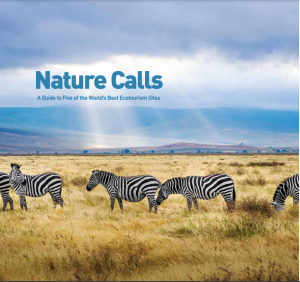
Over the years, ecotourism has been gaining a lot of traction worldwide as more tourists look to be more environmentally conscious while satiating their travel bug. Reports have shown that around 83% of travelers worldwide believe that sustainable travel is important. The economic benefits provided by ecotourism have also been impressive and continue to grow at a healthy rate. In 2019, ecotourism worldwide was estimated to have generated around US$181.1 billion in revenue. This figure increased to US$185.87 billion in 2021 despite the considerable impact of COVID-19 on international travel. Indeed, the global ecotourism industry is expected to expand at a compound annual growth rate (CAGR) of 15.2% from 2022 to 2030.
This growth in ecotourism is mainly driven by the rising popularity of immersive travel, outdoor recreational activities and solo traveling. This trend has been further fueled by urban dwellers looking to get away from the city due to rapid urbanisation and the availability of cheap budget flights. Growing awareness about the adverse impact of tourism on the environment, such as water pollution, soil erosion and habitat loss, has also prompted a number of government authorities to aggressively promote ecotourism and contribute to the growth of the industry.
But what is ecotourism really all about and where are some of the best sites in the world to experience sustainable travel? Let us find out more.
WHAT IS ECOTOURISM?
According to The International Ecotourism Society (TIES), ecotourism can be defined as “responsible travel to natural areas that conserve the environment, sustains the well-being of the local people, and involves interpretation and education”. It is a form of travel that centres on a philosophy of experiencing nature while maintaining its resources and leaving the destination untouched. Much importance is placed on ensuring that local communities are cared for, and that local social culture is respected and conserved.
Sustainable tourism is key to the preservation of the destination’s biodiversity and culture. The income earned through lodging and tour services is channeled back to the maintenance of natural grounds and local communities. The industry ensures that natives earn a good living from the tours. Travel to these areas should leave the communities better off than they were before tourism programmes began.
Having gained a basic understanding of what ecotourism is about, let us now look at five of the best ecotourism sites that the world has to offer.
GALÁPAGOS ISLANDS
This Ecuadorian archipelago of volcanic islands in the Pacific Ocean is famous for being the site where Charles Darwin studied a large number of endemic species in 1835. The information he gathered on the islands later helped him to formulate his theory of evolution based on natural selection.
Much effort has been made to protect the Galápagos Islands since the 1950s. The islands even became a UNESCO World Heritage Site in 1978. However, despite the many endeavours to conserve its natural environment, the site was still at serious risk of overpopulation and mismanaged tourism for years. It was not until a 2007 UNESCO mission confirmed on these environmental threats that people on the islands became more environmentally conscious, and major changes began to take place.
Today, the Galápagos Islands is one of the most environmentally conscious vacation spots in the world. About 97% of the islands’ land mass is out of bounds to human inhabitation as the area is designated as part of the Galápagos National Park. There are also limits placed on the number of cruise travelers who can visit the protected areas yearly. Thus, a visit to the Galápagos Islands is a visit like no other. The endemic fauna and flora on the islands cannot be found anywhere else in the world. There is plenty of exploration to be done in this nature wonderland.
The easiest way to access the different islands (many of them uninhabited) is via cruise tours. This is because the islands, consisting of 13 main islands and countless smaller islets, span over a stretch of 7,800km2 in the Pacific Ocean. For land-based tourists, they must take day boat tours to visit the individual uninhabited islands. Do take note that each day boat only goes to one site per day. Besides travelling by boat, there is also air travel available between the three main islands of Santa Cruz (via Baltra Island), Isabella and San Cristobal.
The advantages of travel by cruise tour are numerous. Cruises are an all-in-one solution which includes lodging, meals, transport and professional naturalist guided tours. Normally, day activities like hiking, snorkeling and small boat tours with guided walks are also included as part of the package. With a cruise tour, you can have access to islands that are out of reach for day boat tours from the towns.
While these luxuries and planned activities are a welcome convenience, they do come at a cost. Fares can run up to thousands of dollars per person. Hence, if you are a budget-conscious traveler, you may need to see if this mode of travel is suitable for you. Another major downside of tour cruises is the lack of control over your itinerary as all activities are all pre-planned, unless you are willing to forgo certain planned activities.
It is also possible to visit Galápagos Islands as an independent land-based tourist (meaning you stay in hotels overnight). However, even as a land-based vacation offers freedom of choice, it is still recommended that travelers explore through organised guided land-based tour packages, instead of exploring on their own. This is because independent tourists are restricted by national park regulations from visiting the uninhabited islands and sites on their own. Secondly and more importantly, unchecked land-based tourism is harmful to the environment. With guided tours, you can pick and choose where you want to explore, including guided day tours in town, on the island or on boat trips to nearby wilderness sites.
There are no direct international flights to the Galápagos Islands. International visitors must take a connecting flight from the Ecuadorian capital of Quito or the city of Guayaquil. Flights from mainland Ecuador land at either Seymour Airport (Baltra Island) or San Cristobal Airport. Do take note that there are no direct flights to Quito from Singapore. Most flights have at least one transit point at Japan or Europe.
The best time to visit Galápagos Islands is from December to May, which is ideal for a year-end holiday. These months coincide with warm weather conditions at the islands. Ocean conditions are also usually clear at this time. These conditions make it excellent to engage in activities like snorkeling and diving.
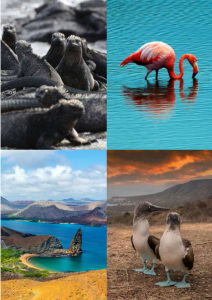
GUNUNG MULU NATIONAL PARK
If you wish to explore the best that nature has to offer but is operating on a budget, there is a site much closer to home that you can visit – Gunung Mulu National Park in Sarawak, Malaysia. Designated as a World Heritage Site in 2000, this national park is famous for its extensive cave networks and rich biodiversity. It is home to lofty peaks, deep gorges, serene rivers and unique geological formations, like the Pinnacles, which are a forest of spires made of limestones.
There are four main show caves in the Gunung Mulu National Park. Deer Cave and Lang’s Cave are closer to the park headquarters and can be accessed together via a 3km plankwalk. The other two show caves, Clearwater Cave and Wind Cave, are accessed either by a boat ride up the Melinau River or a 4km trek through a nature trail. Due to their different access routes, these caves are usually planned as separate day trips.
You may want to start with the simpler Deer and Lang’s Caves tour. These caves are accessed by following a 3km plankwalk which passes through peat swamp, alluvial flats and limestone outcrops. Along the way, you will get to see the rainforest, jungle streams and an ancient Penan burial cave.
The entrance of Deer Cave is the largest cave passage in the world. Its main chamber, which is partially lit by sunlight, is the area where deer used to shelter, thus the name of the cave. Deer Cave is home to many species of bats. It is estimated that the cave houses well over a million of them. Between 5-7pm, if the weather is fine, you may be treated to the spectacular sight of a black cloud of free-tailed bats emerging from the entrance of the cave in search of food.
Following a visit to Deer Cave, you will also usually go to Lang’s Cave, whose entrance is a short distance away from Deer Cave. While Lang’s Cave is the smallest of the show caves, its rock formations are well worth seeing. You will see plenty of mineral formations of calcium carbonate hanging down from the ceiling (stalactites) and building up from the floor (stalagmites) in every direction. As the cave is relatively small and well-lit, you may also get to see some of its inhabitants, including bats, swiftlets and cave-dwelling snakes.
After visiting Deer and Lang’s Caves, you may want to set aside the next day in your itinerary for a visit to the other two show caves – Clearwater and Wind Caves. The Clearwater Cave System is one of the longest cave systems in the world, measuring about 224km. It has a subterranean river, part of which is navigable by boat.
As mentioned earlier, there are two ways of reaching these caves. One is a 4km trek through a nature trail. The other is by long boat along the Melinau River. This usually stops at Wind Cave first. A plankwalk leads from the riverbank to the entrance of Wind Cave, so named because of the cool breezes which can be felt at the narrow parts of the cave. Wind Cave has many impressive stalactites, stalagmites, flowrocks, helitites and rock corals, and is well worth the stopover.
Moving on to Clearwater Cave, you can either follow a plankwalk or take a boat to a picnic area near the entrance of the cave. Clearwater Cave is accessed via a climb. With its underground river, it is a fascinating cave to explore. Plankwalks, paths and small floating bridges make this an easy and enjoyable experience. There are plenty of excellent photo opportunities for those who have the patience for cave photography.
After a tour of the cave, you can make your way back down to the picnic area, where there is a crystal-clear pool. This is an excellent swimming spot and you may want to take a dip in the water. If you do not want to get wet, you can also relax on the picnic benches and admire the rainforest scenery. If you watch the swarms of butterflies that are often seen fluttering near the river bank, you may even get to see the Rajah Brooke’s Birdwing, Malaysia’s national butterfly.
In addition to the show caves, there are a number of easy jungle trails and walks (some of them are free!) that you can explore. These include the Canopy Skywalk, Night Walk, Garden of Eden Valley Walk (a full-day experience), Paku Waterfall Trail and Mulu Botanical Heritage Trail, of which the latter two are free. These walks enable you to experience the park in all its glory, taking in sights of the magnificent rainforest and its rich biodiversity.
And if you are very fit and experienced in climbing, you may want to take on the Pinnacles Hike or the more difficult Summit Hike. Both are regarded as extreme climbs and take a few days (three days for the Pinnacles Hike and four days for the Summit Hike) to complete. The Pinnacles Hike involve a climb up a very steep gradient with sharp limestone rocks, so do not attempt this activity if you do not have above average fitness levels and climbing experience.
A level up from the Pinnacles Hike, the Summit Hike is regarded to be a harder climb than the famous Mt. Kinabalu in neighbouring Sabah. This trek adds an extra day onto the Pinnacles Hike, allowing you to reach the summit. Again, experience, preparation and great fitness are required. But if you do not wish to test yourself to such extreme levels and still want to have some adventure, you can also engage in a spot of adventure caving in Gunung Mulu National Park. There are five different adventure caving options available, ranging from intermediate to advanced levels. For advanced cavers, there is an option for an overnight caving expedition.
There are no direct flights to Mulu from Singapore. Most flights transit at Miri or Kuching. The period of JulySeptember is generally considered to be the peak season, and accommodation can be difficult to secure during this period. Thus, if you are planning to visit during the peak season, do ensure that you make your bookings well in advance.
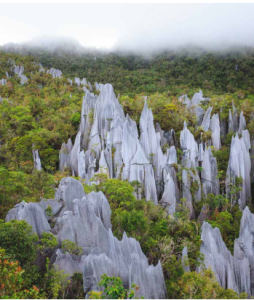
COSTA RICA
Costa Rica is arguably the poster child of ecotourism. There are few (if any) countries on the planet that can match Costa Rica’s commitment to preserving nature. Over 30% of its land mass is designated for conservation, and the country has 30 National Parks, including three UNESCO World Heritage Sites: Area de Conservacion Guanacaste, La Amistad Reserve and National Park, and Cocos Island National Park. Costa Rica is also home to the highest density of fauna and flora species on Earth, including 850 bird species, 237 mammal species, 1,260 tree species, 1,200 orchid species, and 361 reptile and amphibian species. This biodiversity plays an important role in the country’s commitment to conservation. For a country that only occupies a land mass of 51,100km 2 , this is as impressive as it gets.
Costa Rica is world famous for its Arabica coffee beans, and there is a good reason for this: it is actually illegal to plant any type of coffee other than 100% Arabica in Costa Rica. By ensuring that only the highest quality coffee is produced in the country, Costa Rican coffee has maintained its impeccable reputation throughout the world, and coffee remains one of the country’s biggest agricultural exports.
While coffee growing is not necessarily the most sustainable of agricultural practices, government agencies and coffee farmers in Costa Rica have worked to ensure that about 22% of Costa Rican coffee produced is sustainable. Thus, there is no better place to start an ecotour than by visiting one of Costa Rica’s most famous organic coffee farms – Finca Rosa Blanca.
High in the mountains of Costa Rica, on the slopes of Poás Volcano and Barva Volcano, Finca Rosa Blanca coffee farm covers over 120,000m 2 of shady, high altitude fertile soil, producing rich organic Arabica coffee. Learn about the effective, natural methods that the farm uses to help their organic coffee flourish. Finca Rosa Blanca is a certified organic coffee farm, and does not use agrochemicals, pesticides, herbicides or fungicides for its farming practices. Do note that the tour is only available to people who stay at its inn.
After visiting Finca Rosa Blanca, you can continue venturing in Costa Rica’s highlands to explore its Cloud Forests, which are areas of rich greenery that are very humid and moist due to consistent cloud coverage. The warm, tropical temperatures are subdued by the clouds, and the humidity allows plants and animals to thrive.
One of the most famous Costa Rican Cloud Forests is the Monteverde Cloud Forest Reserve. This is one of the most popular tourist destinations in Costa Rica. It is home to some of the most fascinating wildlife in the country, including howling monkeys, colourful frogs and jaguars. You will also find plenty of beautiful waterfalls and hiking trails in this nature paradise. The Monteverde Cloud Forest Reserve is the perfect place to get outdoors for a sight of Costa Rica’s magnificent rainforests. There are many activities to do here, including hiking, zip lining and walking on long suspension bridges, which offer amazing views of the rainforest. There are also lots of little villages in the area, with eco-lodges, museums and restaurants for travelers. If you are looking for a place to relax after an exhausting walk, you will not run out of options.
Another popular destination in Costa Rica is Arenal Volcano. While Arenal Volcano is an active volcano, it has not erupted since 2010. The volcano is surrounded by the beautiful Arenal Volcano National Park. It is full of lush green forests and provides stunning views of the volcano. There are also many hiking trails in the park, which lead to waterfalls and other beautiful areas.
Arenal Volcano National Park features astonishingly beautiful scenery that will take your breath away. The famous La Fortuna Waterfall is located within this national park. You may want to do a hike to the top of the falls, which is about 70m high, or take a relaxing swim in the pools below.
For the adventure driven, you may wish to go off the beaten track and make your way down to the offshore Cocos Island National Park. While this island national park is very difficult to get to as it is far away from the mainland, it is definitely worth the effort as it has marvels that can rival the wonders of the Galápagos Islands.
This UNESCO World Heritage Site is world-famous for its diving. It is appropriate for all levels of divers, but most divers are at least intermediate-level. There are plenty of marvelous sights to behold here, including white-tip reef sharks and humpback whales that reside in the area all year-round. You might even see some dolphins if you are lucky. Cocos Island National Park is one of the most pristine places you will find in all of Costa Rica. It is nature in its most primitive and beautiful form.
There are no direct flights from Singapore to San José, the capital and largest city of Costa Rica. Most flights transit at Europe or the US, depending on the carrier. The best time to visit Costa Rica is between December and April, when the weather is at its driest and brightest. Most people visit Costa Rica during the holiday peak season of Christmas and New Year. Thus, it might be better to visit a couple of weeks after this period when the crowds thin. Traveling during the country’s green season, from May to June or in November, is also a good idea. This is when you can catch the seasons in transition, and the national parks are quieter.
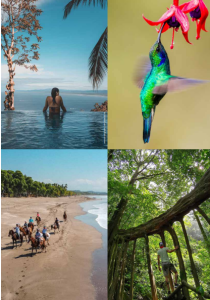
NEW ZEALAND
For the next stop in our worldwide ecotour, we bring you closer to home (relatively) – New Zealand.
New Zealand is big on the issue of sustainability. Even its national tourism marketing campaign, “100% Pure New Zealand”, aims to show how committed the nation is to its natural environment. About 20% of its land is labelled as national park, forest area or nature reserve to protect the country’s awesome landscapes of glaciers, fiords, plains and mountains. While the majority of New Zealanders live on the North Island, nature is prevalent wherever you go, be it the North Island’s verdant hills or the South Island’s snow-capped peaks. New Zealand also boasts much in terms of wildlife wonders.
Start your New Zealand ecotour from Auckland in North Island and work yourself down to the South Island. You can start by visiting the Waitomo Caves, one of the most accessible of New Zealand’s numerous glowworm caves. This site is within driving distance from Auckland. Waitomo Caves is a great place for looking at glowworms. Here, you can go on guided caving tours, leisurely underground cruises or you can get involved in an array of adrenaline-inducing activities like black-water rafting and abseiling.
After exploring Waitomo Caves, make your way to the nearby Tongariro National Park. Made famous by the Lord of the Rings movie series as Mordor (realm of the evil Sauron), this national park is the oldest of its kind in New Zealand, and one of the oldest in the world. It was established in 1887 after the Maori people donated it to the New Zealand government in order to protect it.
Lord of the Rings pilgrims often flock to Tongariro to revel at been one of the film’s key filming locations, but you can still enjoy the natural landscape without disturbing the ecosystem: hike the Tongariro Alpine Crossing, one of the most beautiful day-long hikes you can do in New Zealand. While hiking the 19.4km crossing, you will see all kinds of unique landforms along the way, including hot springs, lava flows and waterfilled craters. It is just like walking through J. R. R. Tolkien’s mystical Middle Earth! While inside the park, you can go waterfall hopping and try looking out for kiwis, New Zealand’s national bird.
While you are in the area, you may want to drop by Rotorua as well, famous for its volcanic and geothermal attractions. Of these attractions, Wai-O-Tapu is the most famous of the lot, just 30km south of town. Get to the amphitheatre in the morning to see the Lady Knox Geyser put on a spouting show, then spend the rest of your time marveling at New Zealand’s largest mud pool, and the unique hues of the pools in the expansive geothermal areas.
After your tour of some of North Island’s natural wonders, make your way down to South Island via Wellington into Christchurch. On the way to Christchurch, stop by the pictureperfect seaside town of Kaikoura, known for its laid-back vibe, eco-friendly attitude and stunning location, where rugged mountains meet seascape. This town is steeped in Māori culture, even down to its name, which translates as “to eat crayfish”. Crayfish is the town’s culinary specialty and can be bought freshly-caught and cooked at local food trucks and restaurants. You can also hike the Kaikoura Ranges for breathtaking views over the coast and go on a boat trip – this area offers some of the best whale, dolphin and seal-spotting in the world.
Moving on, close to Christchurch, the Banks Peninsula offers the unique sight of Hector’s dolphins. An endangered species that is native to New Zealand, there are only around 7,000 remaining in the wild. These playful dolphins are the smallest dolphins in the world and they can only be found swimming in the waters surrounding the peninsula. There are around 900 resident dolphins, making it the largest population of Hector’s dolphins in the world. The dolphins have a safe haven at the entrance to the Akaroa Harbour – an official marine reserve. There are nature cruises and swimming-with-the-dolphin experiences available at the town of Akaroa. Besides Hector’s dolphins, you can also see white-flippered penguins, which is another endangered species.
After exploring these marine wonders, make your way inland to visit Aoraki Mount Cook National Park, a rugged landscape of rock and ice forged by continual tectonic movement. This prehistoric scene is littered with gorgeous turquoise lakes, snow-capped mountains and gargantuan glaciers. Within this national park lies Aoraki Mackenzie, the world’s biggest International Dark Sky Reserve. It is the first International Dark Sky Reserve in the Southern Hemisphere, and is almost entirely free of light pollution, allowing dazzling starlight to shine against a pristine, ink-black sky.
To end your New Zealand ecotour, go to the southern end of South Island to visit Fiordland National Park, particularly Milford Sound and Doubtful Sound – two of Fiordland National Park’s 14 fiords. These are u-shaped glacier-carved valleys flooded by the sea. At these fiords, you will get to see bottlenose dolphins, fur seals, penguins and keas (the world’s only alpine parrot) in their natural habitat. For a more immersive experience, some of these fiords can be explored by kayak, which lends them an even greater majesty.
If you are feeling adventurous at Fiordland, try hiking at the Milford Track. One of New Zealand’s most famous tracks, it starts at Lake Te Anau and is 53km long. You will likely need to set up camp for a few days to complete the track. Along the way, you get to take in the magnificent scenery, including pristine lakes and beautiful alpine forests.
Being in the Southern Hemisphere, the best time to visit New Zealand is during the summer months of December to March – perfect for year-end holidays! Expect long, bright and sunny days that will allow you to enjoy the many outdoor activities available.
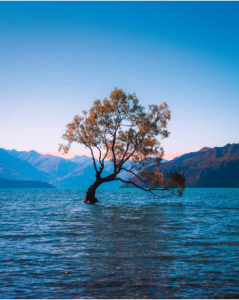
TANZANIA
Like Costa Rica, Tanzania is one of the leading countries in the world when it comes to ecotourism. The country has designated 25% of its land to conservation and the concept of ecotourism has been promoted as an alternative, lowimpact form of tourism that supports conservation of natural resources, preserves local culture, and provides economic benefits to the communities.
In Tanzania, there are 22 national parks. These form the core of a larger protected ecosystem. Within this ecosystem, the ecotourism zones are divided into the Northern, Southern and Western Circuits. The Northern Circuit consists of West Kilimanjaro, Lemosho, Lushoto, Usambara, Ngorongoro and Serengeti. The Southern Circuit consists of Ruaha National Park, Katavi, Udzungwa and Nyerere National Park. The Western Circuit involves Burigi Chato, Gombe and Rubondo.
Out of all these, it is arguable that the most famous is Serengeti National Park in the Northern Circuit. Serengeti is the oldest game reserve in Tanzania and is a UNESCO World Heritage Site. It houses the highest concentration of large mammals in the world, including giraffes, elephants, hippos and lions. It also has more than 500 species of birds, including ostriches and flamingos. Due to its magnificent array of wildlife, the park has had its fair share of celebrity visitors, including actor Will Smith, football star David Beckham and former US president Barack Obama.
Serengeti is relatively easy to access. Travelers can start their Serengeti safari adventure at either Kilimanjaro International Airport or the bustling city of Arusha. From these places, you may travel to your preferred lodge by means of a short transfer flight to one of the park’s seven airstrips. Alternatively, you can book an overland safari in a 4×4 safari vehicle from Arusha to Serengeti, and visit one or two other parks along the way.
The Great Migration is Serengeti’s main draw. This voyage of more than two million wildebeest, zebras and other hoofed animals is one of the world’s greatest wildlife spectacles. Although variations occur from year to year, the migration follows a reasonably predictable annual cycle and is broken into phases, dictated by local rainfall patterns. The best period to witness the migration is probably between May and July, when the wildebeest, after having feasted on the short green grasses of southeastern Serengeti and after having giving birth to their offspring, start getting ready for their 800km long trek. During this time, you may get to see one of the greatest natural phenomena in the world: more than a million marching animals in a column up to 40km long.
Staying in the Northern Circuit, another eco-attraction that you may want to explore is Ngorongoro Conservation Area, another UNESCO World Heritage Site that is about 150km away from Serengeti. The area is named after Ngorongoro Crater, the world’s largest inactive, intact and unfilled volcanic caldera. Besides the crater, you will also see the Olduvai Gorge, forests, mountains and remote highlands to the north of the reserve. However, the main attraction of the reserve remains the Ngorongoro Crater, also known as “Africa’s Garden of Eden”.
Ngorongoro Crater occupies a vast area of 259km2 . It was formed when a volcano the size of Mt. Kilimanjaro erupted and then collapsed on itself over 2.5 million years ago. This impressive crater is over 600m deep, with high walls towering around the crater edge. Animals are regularly seen here, especially around water resources, but to increase your chances of spotting these animals, including endangered species like the Black Rhino and the African Wild Dog, you should try exploring the crater early in the morning. The best time to visit Ngorongoro is between May and October, during Tanzania’s dry season. During the rainy season between November and March, some animals are hidden away in the short grass plains, bringing up their young. Do note that in order to visit the Ngorongoro Crater, you are required to travel with a licensed guide. This is provided by the site for an extra fee or through a safari tour.
After visiting the Northern Circuit, you may want to make your way down to the middle and south of the country to marvel in the wilds of the unspoiled, secluded wilderness of Ruaha National Park and the UNESCO World Heritage site, The Selous. These regions are lesser-known compared to the more famous attractions in the Northern Circuit, but they offer just as much in terms of biodiversity and rich experiences. These areas have all of the usual safari experiences as well as many other activities, including boating safaris and fishing, night game drives, walking safaris, exceptional birding, and more.
To get your Tanzanian journey started, you may wish to fly to Kilimanjaro International Airport and start with the Northern Circuit. Most flights take at least two stops to reach Tanzania. The best time to visit the country is from July to October when the country is at its driest. July coincides with the Great Migration and is also an excellent time to visit Ngorongoro Crater.
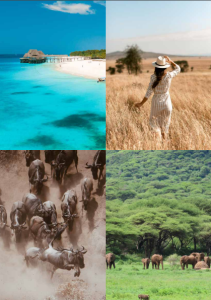
SUSTAINABLE TRAVEL
After being “trapped” in Singapore for the best part of two years, most of us are itching to travel abroad again. Some of us may be looking to experience nature in all its glory, instead of just going to another bustling city for shopping and eating. There is no better way to do so than by going on an ecotour at a location that looks to protect nature. Let us satiate our travel bug responsibly and care for this fragile planet of ours. Sustainable travel is here to stay.










